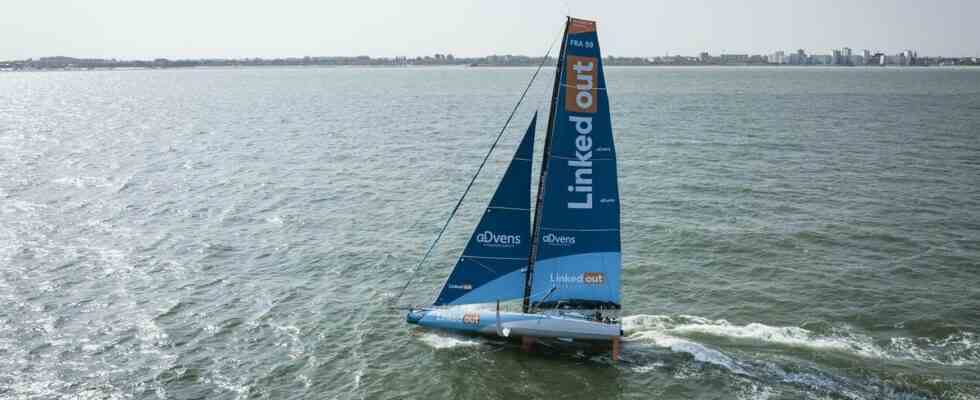The expedition around Iceland will have come to an end. The Arctic Vendée was supposed to offer the fleet of Imocas a 12-day sea battle around Iceland, but the skippers ended up spending only five days at sea. the course by setting up a virtual door to bring the fleet back down to the south of the island. A decision that Thomas Ruyant (LinedOut) regrets, 3rd in the race won by Charlie Dalin. The recent winner of the Jacques Vabre explains to 20 minutes the difficulty of navigation in this hostile zone of the globe.
How did you experience this interruption of the race?
It’s unprecedented. I’m a bit frustrated and disappointed that it’s ending so quickly. Have the right choices been made? It’s a question. I had left for a committed race of 10-12 days, finally it was cut short. But the five days at sea were quite intense, it was a great regatta. I am not satisfied with my 3rd place, we always want to do better. But hey, there was this stopover in a completely surreal Icelandic fjord…
It still seemed risky to continue the race.
What happened was that on the one hand, we were the first to have the conditions to go around Iceland and do the whole route. Except that on the other hand, the fleet was very stretched with latest generation boats, others from older generations, which posed a problem. Wouldn’t the right solution have been to leave the choice to those who wanted to pass, to pass, and for the others, to turn around or to take shelter along Iceland, and resume their way after? I would have preferred this type of solution. Now it’s the choice of race direction. Twenty-five boats with different experiences in seas that we don’t know well, with weather forecasts that aren’t necessarily very precise, it’s not easy to manage.
We know the South Seas in the Vendée Globe, but what makes these North Seas special?
These are seas in which we will never race. Seas where you have no escape. On a Vendée Globe, you see things coming, you anticipate them, you place yourself, you make your strategy according to what you can do and what your boat is capable of withstanding. You can have strong depressions, but you have to be able to anticipate them. The problem with going up in the North is that you are doing a South-North or North-South route, and these are routes swept by weather systems on which you have no “escape”.
There is also the question of forecasts. There are fewer issues regarding maritime freight, the formation of cyclones, etc., in this area of the globe. This is of less interest to organizations that do weather forecasting. In Europe, when you are told 35 knots, you have 35 knots, that’s clear and clear. There, in those corners of the globe, there are fewer sightings, so the algorithms that make the wind estimates underestimate what’s going on. As a result, you can quickly be surprised by weather conditions that can deteriorate quite quickly.
This race, it is not called into question by this interruption?
It was an atypical course, it has nothing to do with what we usually do. What happened is specific to this race, it won’t be a generalization about offshore racing. It absolutely could not happen in a Vendée Globe or a Transat. Chances are there will be a next release. There has to be a lower course, a little better defined, which was not necessarily the case here. There will be lessons to be learned from this situation.
Are the conditions encountered the result of climate change?
No no. The conditions of somewhat violent depressions are classic. We knew at the start of this race that it could be engaged. Afterwards, of course there were severe conditions, part of the fleet had more than 60 knots, with heavy seas, and it was still on track to deteriorate afterwards…
Was the route the same as the first edition?
No, precisely we were further south in relation to Iceland, with a point to circumvent. So it was less committed than when you have to cut through Iceland and go through the polar circle. We are close to the icebergs, not far from Greenland. The course was not trivial. We go further north than we go south on the Vendée. It’s colder, the water is colder. We had an area of ice in the north of Iceland to respect, but the icebergs don’t go that far. You have a current that carries the ice south to Greenland, so it doesn’t drift all the way to Iceland. But you still had to put a northern limit, because if you have to tack, you can push a tack if the East option, towards Greenland and there, for once, you can find ice on your journey.
How does the machine handle the cold? Are these data that you have observed?
The machine doesn’t care whether it’s cold or hot, the sailor a little less (laughs). I had a good down jacket on board, after that you gear up… We have what we need today for the cold. What is certain is that the air is denser. Thirty knots in Brittany is not the same weight as 30 knots in Iceland. It is very quickly felt 15% more in terms of sensation and weight of the wind. So this cold has an impact. But it’s not at all something that bothers me, I liked it. Of course it’s not the trade winds or you’re in shorts, but you adapt (laughs). You eat hot while in France it was the heat wave.

